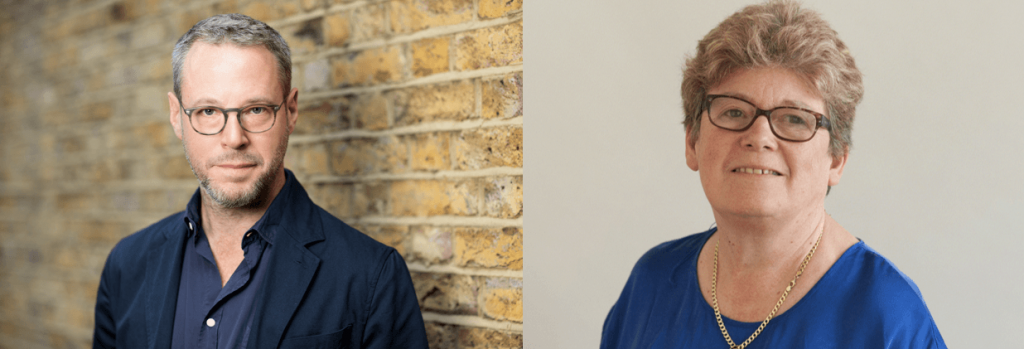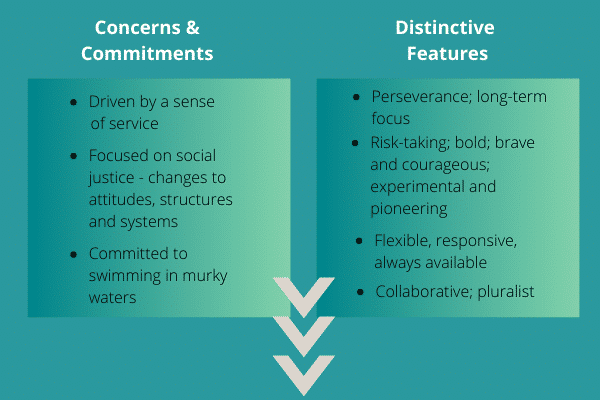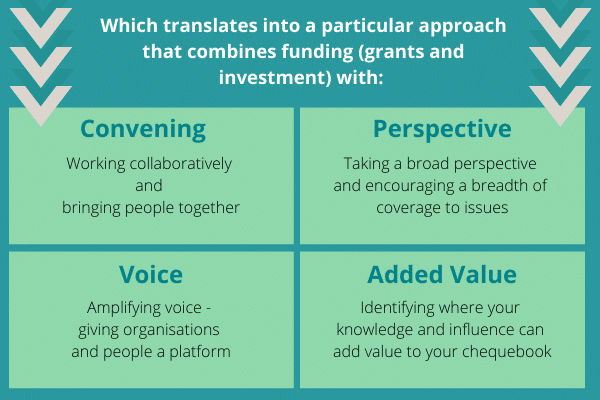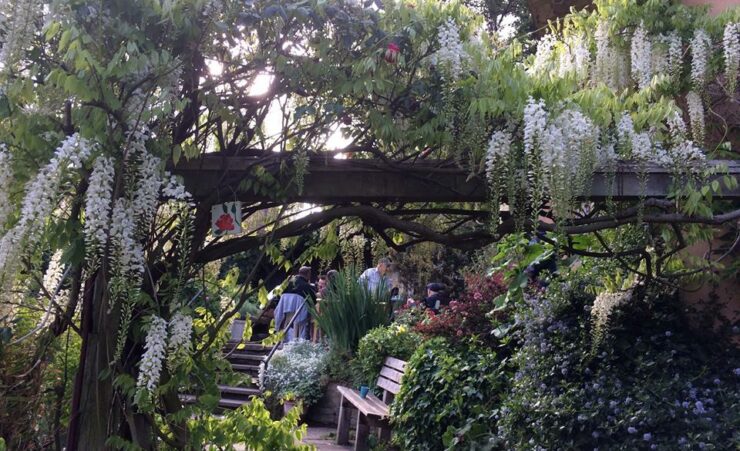
Where to start when everything is so uncertain
Thoughts for funders
In this 10-minute blog, Ben and Sara explore the idea of ‘alignment’ and how it could help trusts and foundations to navigate uncertainty.
Focusing on ‘impact’ is backwards – we need to look ahead
Ben Cairns, Director of IVAR
Since the outbreak of the coronavirus pandemic, we have heard from staff in trusts and foundations about often frenetic searches for information and inspiration to help them see the right way forward. As if more data might provide the answer to often overwhelming choices about priorities and preferences.
In thinking about how to support people through this unprecedented period – one for which there was no rehearsal – we have been sharply reminded of a project that crystallised IVAR’s thinking about what it really takes for foundations (and organisations of any kind) to manage well in uncertainty and complexity. In particular, of the critical importance of alignment: between mission and process; and between values and behaviours.
In 2014 we worked with Barrow Cadbury Trust trustees, staff, and partners to carry out an assessment of how the Trust was doing against its 2013-16 strategic plan. Some weeks into the process, during a conversation with trustees, we wondered out loud whether they might find it useful to frame their thinking about progress in terms of ‘learning’ rather than ‘impact.’ We were not suggesting that they adopt a cavalier attitude to what success looks like for a programme or initiative. But a focus on proving impact is essentially backward looking – ‘what were the inputs and what did they deliver?’ – and too often leads to sterile debates about causality and attribution. While a concentration on learning is forward looking and flexible – ‘what is all this telling us about how the changes we want to see can most effectively be achieved? And about how we might improve our contribution to pushing them forward?’.
Concentrating on learning is forward looking and flexible: ‘What is all this telling us about how the changes we want to see can most effectively be achieved?’
We saw Barrow Cadbury as an engaged funder, driven by its values and with a long-term perspective. Trustees were clear about wanting to ‘swim in murky waters’, shining a light on complex, intractable and unpopular issues. They embraced causes where success is far from assured and engagement often felt like both a moral imperative and an act of faith. They trusted that things of value would emerge, but did not prejudge what they might be and where they might lead. Framing questions about progress in terms of the learning that had been achieved, and its value in shaping their next steps, sat well with work that is unpredictable and emergent. And with an organisational mindset that accepts, and is comfortable with, the high level of ambiguity inherent in tackling complex social issues.
Seven years later, with uncertainty and complexity as far as the eye can see, we have found ourselves going back to these conversations. We know that, in their immediate responses to Covid-19, funders were able to step outside the normal: embracing unrestricted funding, lightening up reporting processes, trusting and talking more, and letting go of impact. For some, this has been relatively painless, and there is appetite to continue. For others, these actions have felt more counter-cultural. Lurking in the shadows is an anxiety that key stakeholders, be they trustees or grants staff, may seek to revert back to ‘business as usual’, which is often a shorthand for heavier processes, tighter demands in relation to reporting, and higher expectations in relation to impact.
Funders have stepped outside the normal – but lurking in the shadows is an anxiety that things may revert back to ‘business as usual’.
In this context, our experience with the Barrow Cadbury Trust feels instructive. Our big takeaway from our time with them was that their approach – so much of which resonates with the culture of recent emergency responses – was made possible because they are properly aligned. Roots, values, beliefs, purpose, process, and behaviours – are all connected and interlinked. None of that guarantees everyone’s experience of the Trust will be a good one, or that they always get it right. But this alignment does enable everyone within a foundation to set aside the fruitless quest for more data to provide ‘the right answer’ or ‘the right thing to do’, and to work confidently to achieve the intelligent, compassionate and flexible responses that are now called for, by focusing instead on: “given who we are, what we believe and care about, what we have heard and learned and what we are seeing right now – what should we do next?”.
The secret is alignment, but what does this mean?
Sara Llewellin, Chief Executive of Barrow Cadbury Trust
Alignment is crucial for any organisation to be successful in pursuing its vision and achieving its mission. In our particular case, the vision derives very clearly from the Quaker social justice belief system and the values inherent in it. Over the past century, the fundamental values of the Trust have mainly been constant – but their manifestation in our work has been iterative, dynamic and organic. We aim to apply these values to the ever changing ‘present day’, so this means constantly updating and flexing what we do to reflect the rapidly changing external environment in which we operate.
So, what do we mean by alignment and what are the key features needed to achieve it? Essentially, I would say people coming together to pursue a values-driven shared purpose. Alignment is achieved when all parties have the same prize in view and each plays their particular part in order to achieve more than any of us could alone. As the Barrow Cadbury Trust works to achieve structural change in injustice and inequality, this is a true imperative for us as – by definition – structural change can rarely be brought about by atomised or uncoordinated approaches. Or, indeed, by concentrating only on the grassroots or only on power elites.
For foundations, this means navigating and calibrating very carefully the power and trust dynamics between different parties so that resources, especially financial, are best used to facilitate change. Easy to say, but also easy to lose sight of when you control the resource base and can so easily slip into careless high-handedness.
Our approach to power sharing is to consult deeply and iteratively on what needs to change and how best to achieve it. Then, the money and other resources at our disposal are used to vigorously pursue that change. For this to be most effective our board, our staff and those we work with need to be on the same page, confident of each other’s goodwill, able to be honest about what is going to plan and, crucially, what isn’t. And this is not a one-off task – we have to work at it in the spirit of solidarity all the time.
This is not a one-off task – we have to work in the spirit of solidarity all the time.
The image below shows how IVAR visualised alignment between our trustees and staff.


In our organisation, staff are appointed who demonstrate a personal lived commitment to our social justice values, although we are of all faiths and none rather than all Quakers as in the past. We don’t all agree all the time – what an echo chamber that would be – but for all of us this is not just a job and we do aim to go that extra mile to strengthen the organisations we work with and the hands of the change makers within them.
Good governance is key both to creating and to maintaining alignment. In our model of work, this means the board needs to be comfortable with working longterm on knotty issues, rather than working in three-year cycles and then moving on to wholly new areas of work. The board and senior management team need to be prepared to take risks with seeking out new solutions to old problems and also to tackle things which are very hard to measure.
The Trust has long prioritised speaking truth to power by enabling the voices of experts by experience to be heard in the corridors of power. To make this happen we have to listen to, work alongside and understand those with varied perspectives and find our commonality from which to build solidarity. This is both the product of, and the goal of, values alignment at the core of our work.


